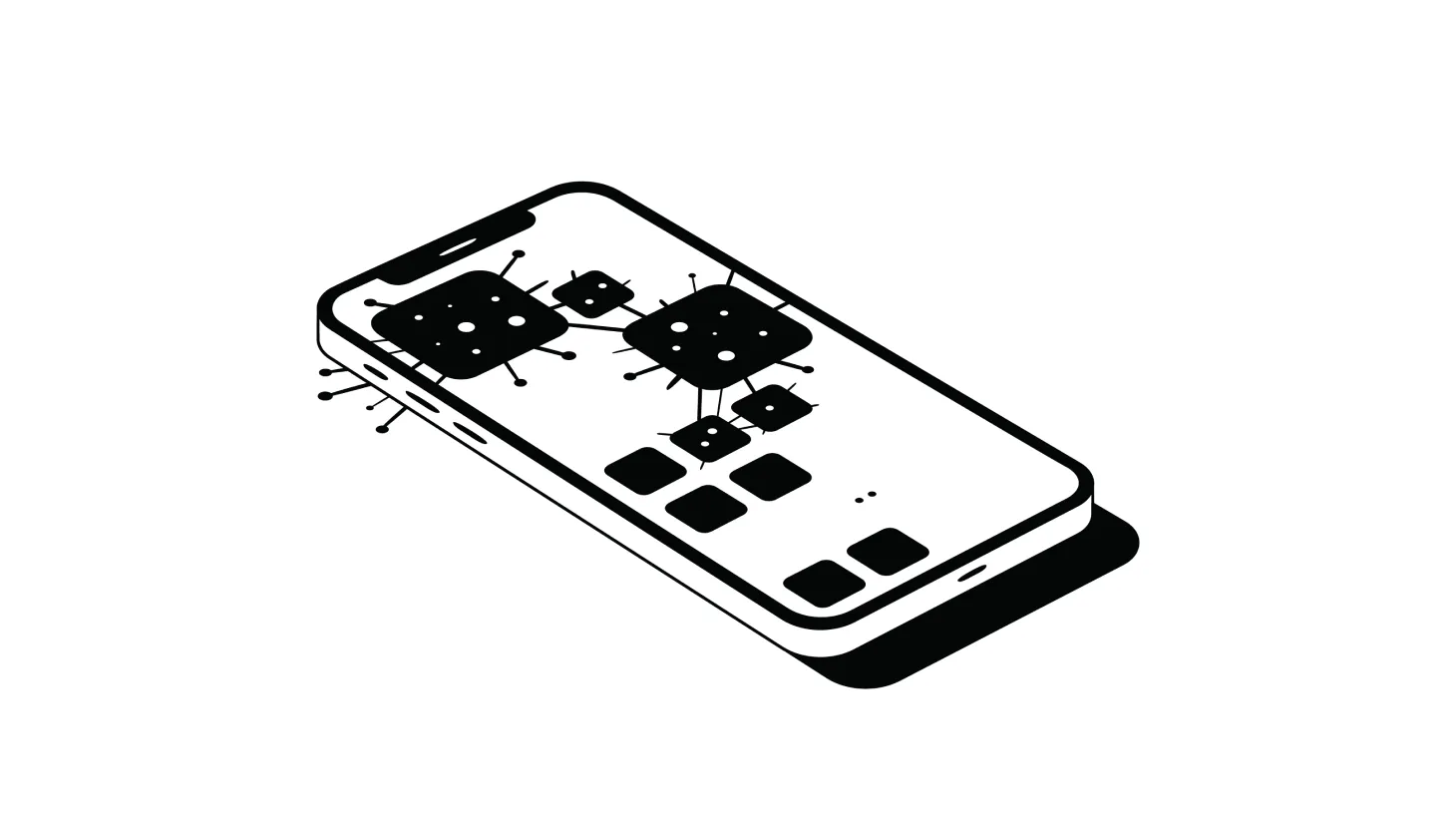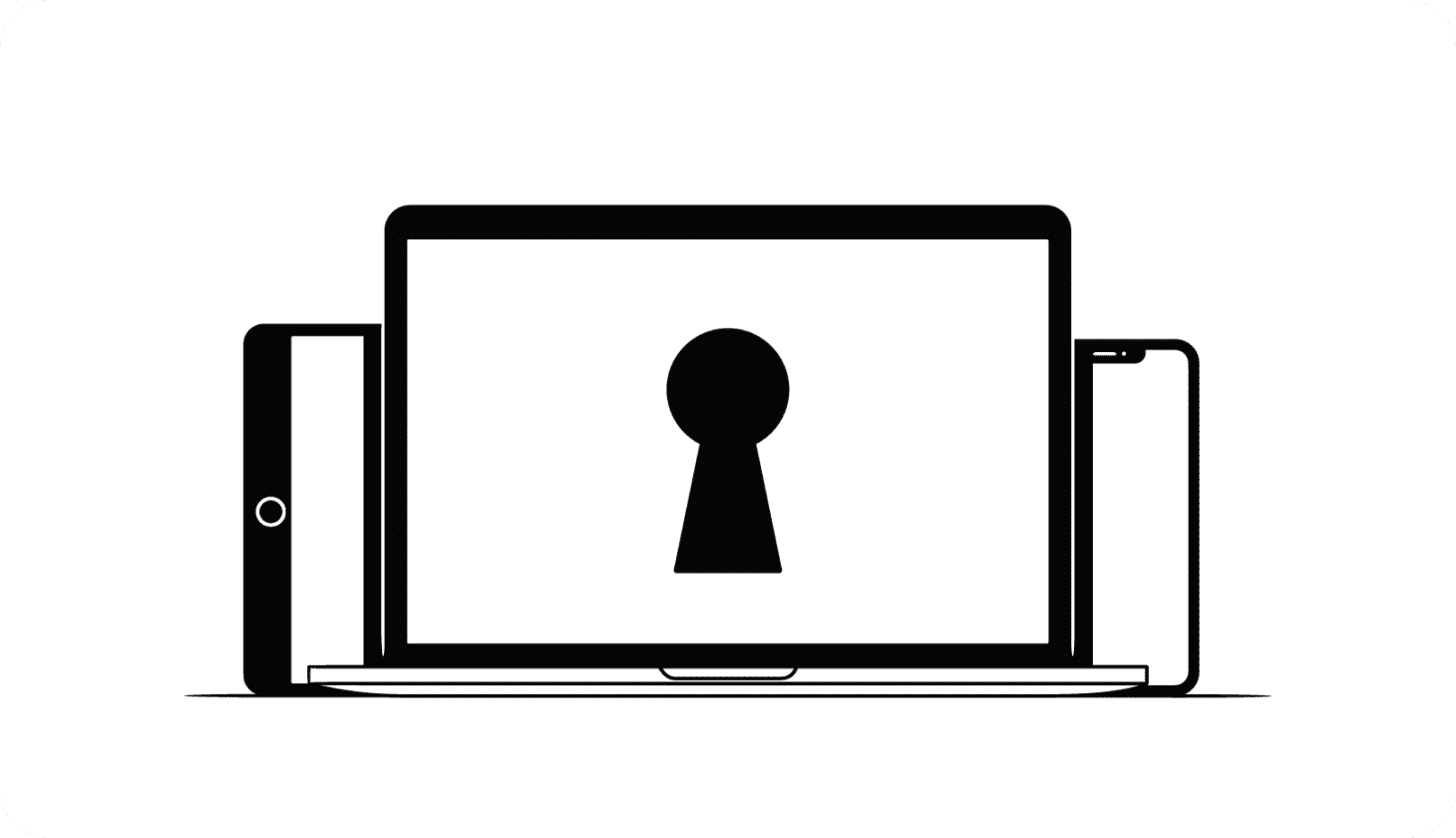In this article:
How To Remove Viruses From Your Computer (Mac and PC)
It’s important that you act quickly as soon as you see signs that your computer has been infected with a virus to limit damage and protect your identity.
It’s important that you act quickly as soon as you see signs that your computer has been infected with a virus to limit damage and protect your identity.

How Do You Get Rid of Computer Viruses?
Malware attacks continue to rise year after year. In 2023 alone, cybersecurity experts logged six billion new malware attacks — making the chance of your device being infected higher than ever [*].
While some computer viruses are easier to get rid of, others require specialized knowledge and a few tricks to completely remove them from your device.
In this guide, we’ll explain how to remove malicious software from your PC or Mac, the warning signs to look out for, and how to protect yourself in the future by using antivirus software and other tools.
{{show-toc}}
How To Remove Viruses From a PC Computer
Cybercriminals hide viruses in unsuspecting places — such as compromised apps or browser extensions, malicious email attachments and downloads, and legitimate-looking files that embed themselves into computer operating systems.
Once infected, hackers can potentially access your computer, steal your private data, spy on you, or use up your computer’s resources. If you see any of the warning signs of a hack or virus, it’s important to act quickly to minimize the damage.
Follow these steps to clear your PC of viruses and malware:
1. Install the latest Microsoft updates
Keeping your operating system up to date is a crucial part of effective security hygiene. That’s because Microsoft includes important security patches with its updates in order to protect your device from the latest viruses and malware.
It’s also possible that your device doesn’t have a virus at all. Using outdated software can cause some of the strange behavior that people normally associate with malware. Installing the latest version of Windows 11 can help you troubleshoot the issues and know whether or not you need to take more drastic measures.
You can perform a software update by clicking on Start > Settings > Windows Update or by downloading the latest version of Windows.
Pro tip: Some computer viruses prevent you from updating your device’s operating system. If this happens, consider it a sure sign that your computer is infected.
2. Download and install antivirus software
Antivirus and antimalware programs protect your computer by deleting malicious code after it starts running on your device. Modern antivirus products run in the background, providing round-the-clock protection against computer viruses, trojans, ransomware, and other threats.
However, not all antivirus programs produce the same results. Even worse, some “free antivirus” or “computer clean up tools” are really viruses in disguise [*].
Your computer may have built-in antivirus software, as well. For example, Microsoft Windows PCs come with Microsoft Defender already installed. Make sure to verify whether your device’s built-in antivirus is installed and working properly before downloading a new one.
💡 Related: Do You Need Antivirus Software in 2025? →
3. Disconnect from the internet
Disconnecting your computer from the internet may prevent viruses from working properly and sending your sensitive data back to hackers. For example, some viruses require direct commands before they start encrypting personal files or capturing login credentials.
When you disconnect your device from the internet, you disrupt that line of communication. This helps reduce the risk of the virus infection spreading to other devices or accounts.
4. Reboot your computer in Safe Mode
After you’ve disconnected your device from the internet, try rebooting it in Safe Mode. This will make your computer run in a limited state, with fewer applications and capabilities. It may also disable the virus, allowing you to isolate it and remove it from your system.
Every device manufacturer has a different method for booting into Safe Mode — for example, from either your Windows 10 or 11 sign-in screen, you can enter Safe Mode by pressing and holding the Shift key while selecting Power > Restart. You’ll then be presented with an option screen to boot in.
Next, select Troubleshoot > Advanced options > Startup Settings > Restart. Once your device boots up, select “Safe Mode” (not “Safe Mode With Networking” as that will enable internet access).
The next few steps all take place in Safe Mode. You’ll know your device is in Safe Mode because it will display the words on all four corners of the screen.
📚 Related: How To Check For Viruses On Your Mac →
5. Delete temporary files and clear your browser cache
Since viruses typically come from the internet, many disguise themselves as temporary files or embed themselves in the web browser cache. Deleting temporary files and clearing your cache can help with virus removal.
In Google Chrome, Microsoft Edge, and Mozilla Firefox, you can access the Recent History window by pressing Ctrl + Shift + Del. From here, you can choose to clear your entire history or specify a period of time to delete.
If your computer began behaving strangely at an exact time or date, you can try deleting files downloaded during that time. If you don’t know exactly when your device caught a computer virus, you can safely move your entire history to the trash.
6. Run a virus scan to isolate malware
Open the antivirus program you downloaded in Step 2. If you are using Microsoft’s built-in Windows Defender antivirus, that will work too.
Every antivirus works by scanning your entire computer for indicators of compromise. Once you click on the Scan button, your device will become unresponsive while it verifies every file and application it contains.
This process may take minutes or hours. The length of time depends on your device’s computing power and the volume of files stored on your hard drive. When it’s finished, you will see a window displaying information about all of the suspicious files that the antivirus detected.
💡 Related: How To Protect Yourself From Hackers →
7. Delete viruses and unwanted programs
Review the information your antivirus shows you about potentially malicious programs and files on your device.
You may also see files and applications that don’t correlate to a specific threat. The antivirus may simply tag them as suspicious files that you need to review. Unless you are 100% sure that a file is not a virus, you should probably delete it.
8. Reboot your computer
With viruses and malicious files removed, it’s most likely safe to reboot your computer by turning it off and back on again.
You may see a window or dialogue box asking if you want to boot into Safe Mode or normal mode. Select normal mode and let your computer boot itself up like it usually does.
If your device doesn’t boot up properly at this point, something else may be wrong. A hardware issue or some other kind of damage may be preventing it from booting up normally.
9. Download and run Microsoft Safety Scanner
As a final precaution, download and run the Microsoft Safety Scanner application on your device. This is a specialized antivirus that will help you identify persistent threats on your computer. It can also reverse the changes made by certain types of malware and prevent future attempts to reinstall infected files.
This step is important, even if you deleted the original virus already. That’s because viruses work by making changes to your device. They may encrypt data, change file permissions, or store copies of sensitive data in unsecured places. Deleting the virus doesn’t reverse those changes, especially if other malware or rootkits are present on your device.
Microsoft Safety Scanner enhances your antivirus by reverting your computer to its original state before it was infected. This works best with highly visible viruses that it has encountered many times before. If your device was infected by a new or unknown virus, it may not produce the same results.
💡 Related: Is Guardio Legit? What To Know Before Your Buy →
10. Update account passwords, and enable 2FA
Many viruses look for password data and share it with hackers, allowing them to steal their victims’ identities. Deleting the virus and reversing the changes it made to your system won’t help if hackers learned how to log in to your accounts.
Assume that all of your account passwords have been compromised. You will have to set new passwords and enable two-factor authentication (2FA) for every account that supports it.
Choose strong passwords that are unique for each of your accounts. Consider using a password manager to securely create and store all of those passwords through a single service, ensuring that you don’t forget them in the future.
How To Remove Viruses From a Mac Computer
Despite what you may have heard, Apple computers are just as vulnerable to viruses as Windows, Android, iPhones, and other iOS devices. Macs share many of the same vulnerabilities, and require a similar approach to installing security software, virus scanners, and virus removal tools.
The process for removing malware from Macs is broadly similar to the one described above, but with some minor adjustments:
- Install the latest Apple updates. Apple regularly improves operating system security with new patches and upgrades. Make sure your device is running the latest version of Apple macOS.
- Download and install antivirus software. Apple computers come with built-in antivirus software called XProtect, and many additional options are available through the App Store [*].
- Disconnect from the internet. If the device can’t connect to a Wi-Fi network, hackers will be unable to execute many remote commands on it. Check the MacOS activity monitor app to make sure your device isn’t making connections to other infected computers.
- Reboot your computer in Safe Mode. To boot your Mac into Safe Mode, hold the Shift key as soon as you press on the power button. You may need to log in twice. You will see the “Safe Boot” option in the menu bar.
- Delete temporary files and clear your browser cache. Open Safari and navigate to Clear History and Website Data. Select the time period you wish to delete, and confirm. If you use Google Chrome or other web browsers, repeat this process for each one.
- Run a virus scan to isolate malware. Run your antivirus software and let it scan your Mac. When the process finishes, review the data describing the suspicious files it found.
- Delete viruses and unwanted programs. Delete every file that your antivirus flags as suspicious unless you are 100% certain it’s not a virus. Pay attention to the recommendations provided by XProtect.
- Reboot your computer. Turn off your Mac and turn it back on. It should now run normally. There is no need to run an additional safety scan.
- Update account passwords and enable 2FA. Make sure all of your accounts are secured with strong, new passwords and multi-factor authentication.
💡 Related: How To Check For Viruses on An iPhone →
How To Tell If Your Computer Has a Virus: 13 Warning Signs
Hackers can use a variety of methods to infect your device with malware — from phishing attacks that trick victims into downloading malicious files to fake apps disguised as legitimate ones found in app stores.
Once embedded in your system, viruses can be very hard to detect. Some types of malware loudly announce themselves — like ransomware attacks that tell you your device has been infected — but many hide in the background without making themselves known.
Here are some of the most common warning signs indicating that your device may be infected with a computer virus:
- Alerts from your antivirus software. If you have quality antivirus installed on your computer, it should alert you in real-time of potential virus threats. However, be careful of any website pop-up, email, or text claiming that your device has been infected, as these are often phishing attempts meant to trick you into downloading fake antivirus software. Only trust verified apps that you’ve downloaded or enabled.
- Your device is slow or crashes all the time. Many viruses cause computers to run slowly or even crash frequently. Others intentionally steal computing resources from you to mine cryptocurrency.
- You’re constantly being redirected to strange websites. Adware is a type of malware that serves advertisements to victims without their consent. Often, they simply redirect you to websites, or change your browser’s default homepage to ones that advertise items or services that you don’t want. Hackers do this so they can collect advertising fees from the companies responsible.
- Constant pop-ups (or ransomware notices). Another version of adware uses intrusive pop-ups to display advertisements to victims. In other cases, intrusive pop-ups may tell you that your device is being held hostage until you pay hackers to release it.
- You can’t access your computer or online accounts. If spyware is sharing your login information with hackers, they may use that data to steal your identity. You might find yourself locked out of your computer or unable to access your online accounts.
- Your mouse moves on its own. Some remote desktop scams allow hackers to log in to your device directly through the internet. This gives them direct control over your device as if they were physically using it. You might notice your device is acting strangely when it’s connected to the internet.
- Unfamiliar files or folder changes. Computer viruses can make changes to the way your computer stores and processes information. You may see files in unusual places or notice other changes that you don’t recall making.
- Strange emails in your sent folder. If a computer virus compromises your email account, hackers may use your email to send messages to people on your contacts list. Most likely, these messages contain copies of the virus designed to infect the devices of everyone you know.
- Unexpected apps running in the background. Your computer should not run applications on its own, except for apps designated in your startup settings. If you notice applications opening up and running without any interaction from you, it may be a virus.
- Higher than usual data usage. Some viruses hijack your device’s connection to the internet in order to send and receive files or commands. This might mean your device is involved in large-scale distributed denial-of-service (DD0S) attacks.
- Your antivirus, firewall, or digital security tools have been disabled. Many sophisticated viruses work by first disabling the victim’s built-in digital security measures. This gives them the freedom to conduct further attacks without the risk of being detected.
- Your device is making strange sounds. Malware developers have no reason to design their software for compatibility and smooth performance. Your device may act strangely and start making unusual noises when processing malware commands.
- You can’t update your operating system. Many viruses prevent victims from updating their operating systems. This ensures that the device remains vulnerable to whatever exploit the virus leverages. You may see an error message when you try to update, or the computer may simply refuse to acknowledge the request.
Are Free Antivirus Tools Safe To Use?
You may be tempted to download and run a free antivirus tool instead of paying for a premium service; however, this can potentially leave your device open to even more hacking. While there are some legitimate free antivirus programs, many are either poorly made (and can cause performance issues on your device) or could even be viruses in disguise.
When you’re looking for an antivirus software, always keep in mind the following:
- Only trust reputable, well-known brands. High-quality cybersecurity brands have large followings and successful products. Avoid downloading software from individuals and companies you don’t know.
- Ask yourself how the app makes money. Developing and maintaining an antivirus program costs money. If a developer gives away software for free, it’s unclear how they can afford to keep it running.
- Look up reviews first from other customers. Search Google for reviews from previous users. If they reveal that the software made their problems worse, it’s probably a scam.
💡 Related: Is Avast Antivirus Safe To Use? What To Know Before You Buy →
How To Protect Your Computer From Viruses and Hacking
Malware is a constant threat, but it’s one you can defend yourself against. If you install trustworthy digital security tools and practice good cyber hygiene, you make it much harder for hackers to take control of your devices.
For stronger security, consider using an all-in-one digital safety solution like Aura. With Aura, you get a full suite of digital security tools — including antivirus, a virtual private network (VPN), phishing protection, a password manager, and more — along with optional award-winning identity theft and fraud protection, dedicated 24/7 U.S.-based White Glove Fraud Resolution support, and up to $1 million in identity theft insurance.
Editorial note: Our articles provide educational information for you to increase awareness about digital safety. Aura’s services may not provide the exact features we write about, nor may cover or protect against every type of crime, fraud, or threat discussed in our articles. Please review our Terms during enrollment or setup for more information. Remember that no one can prevent all identity theft or cybercrime.











